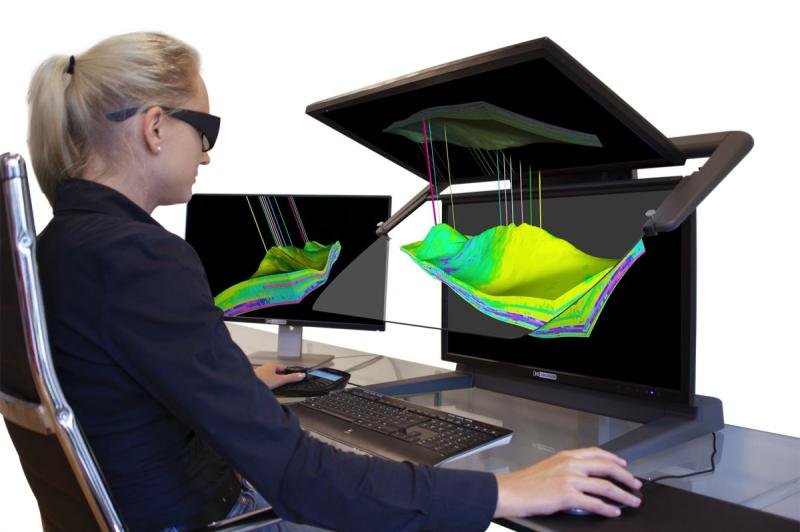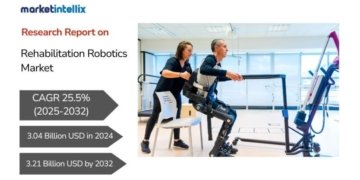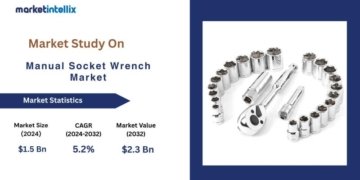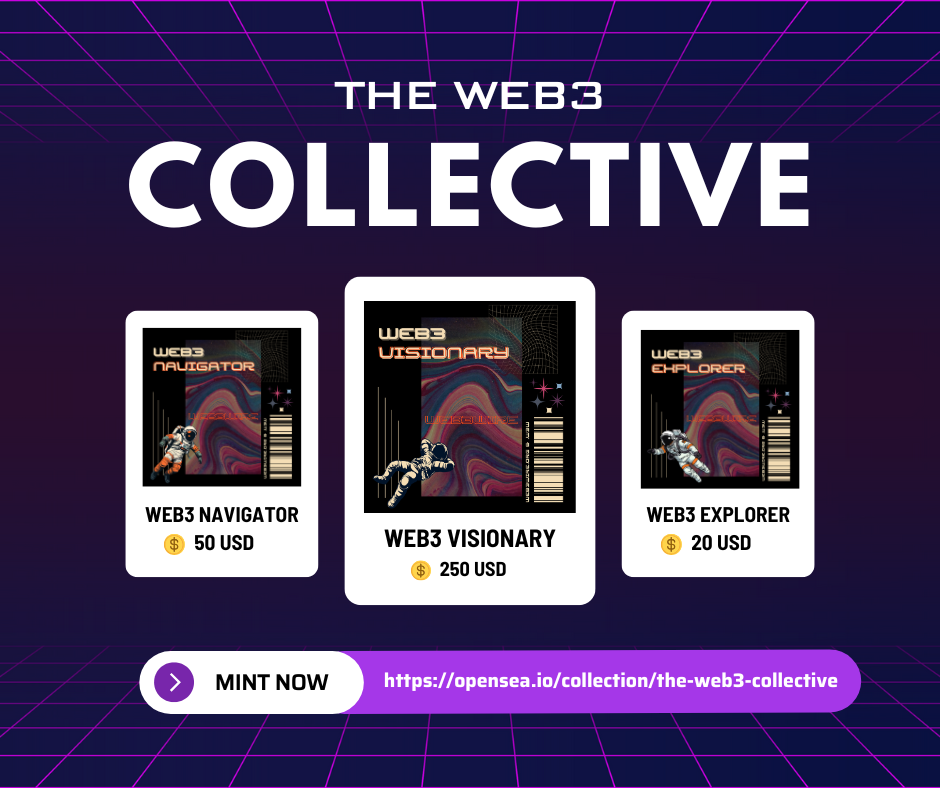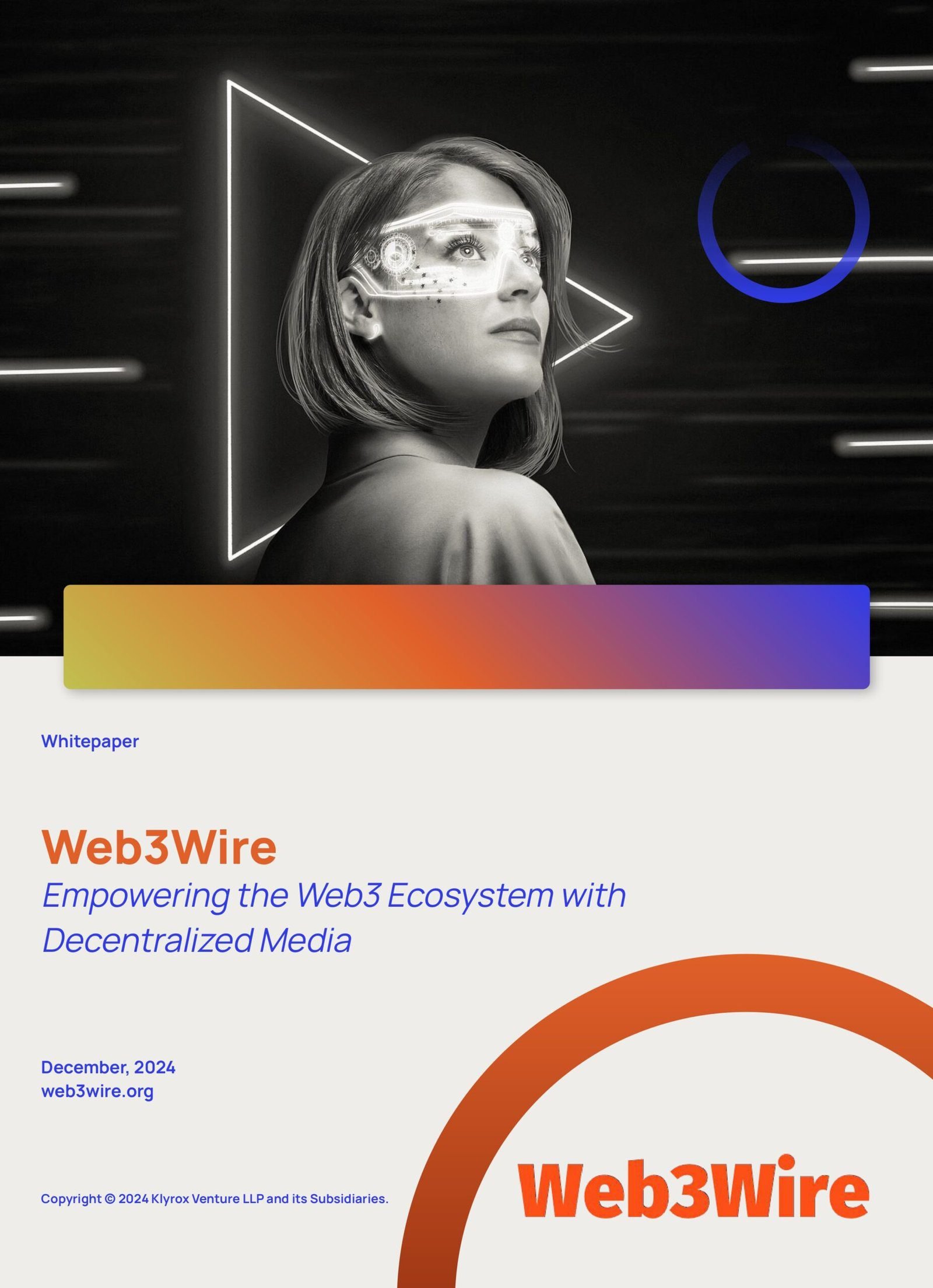With up to 4K resolution per stereo channel and screen, the user benefits from a consistently available, extremely bright and high-contrast 3D stereo display when evaluating stratigraphic profiles, seismic 3D data, borehole information and 3D models derived from it. In the oil and gas industry, stereo-capable software, such as Petrel from Schlumberger, Halliburton GeoProbe or MapInfo Discover, is used specifically for exploration and increasing production. These allow professional users to quickly and comprehensively integrate, visualize and analyse all relevant subsurface information, run through variants and simulations, improve understanding of the concession and ultimately provide more accurate forecasts for hydrocarbon yields. Visualization in 3D stereo is an integral part of a best-practice toolkit that ensures the success of the project.
For geologists and geophysicists, the optimal visualization of 3D geodata is the key to the best possible analysis and evaluation of geological and geophysical information components. The stereoscopic 3D PluraView dual screen systems with integrated beam splitter mirror from Schneider Digital offer this optimal visualization directly at the workstation.To optimize the production and exploration of oil and gas fields and to increase yield and efficiency, it is necessary to understand complex geological conditions precisely. With a better understanding, problems can be detected earlier, which minimizes avoidable delays in the process and leads to a significant reduction in costs.
Petroleum engineers and geoscientists spend a lot of time combining 2D and 3D data sets from multiple sources to create interpolated 3D subsurface models in digital form. These datasets are used extensively by the oil and gas industry over time in a variety of formats, at different resolutions and with very large amounts of data. The stereoscopic monitors of the 3D PluraView series, with their proven beamsplitter technology, offer the highest quality for stereoscopic display in the workplace. They are the definitive interface in visualization, for the creation and analysis of digital 3D ‘twins’. Schneider Digital’s stereoscopic 3D monitors can visualize all captured surface and subsurface structures as well as dynamic processes relevant to oil and gas field exploration and production. True stereoscopic visualization not only makes it easier to interpret 3D data, but also significantly improves collaboration between members of exploration and production teams. Multiple specialists can simultaneously view, analyze and discuss a data set on a 3D PluraView. They benefit from the impressive, holographic display of the geodata in a normal, not specially prepared or darkened office environment and a flexible viewing angle of almost 180 degrees.
Optimal visualization for stereoscopic 3D geodata at the workplace
The 3D PluraView monitors are ideally suited to displaying 3D deposit models together with detailed surface data stereoscopically in 3D. With two high-resolution screens, the two stereo images for the left and right eye are combined by the so-called ‘beam splitter’, a specially coated half-mirror, to form a very bright and high-contrast holographic stereo image. The different polarization angle of the PluraView glasses separates the two stereo channels for the left and right eye, resulting in a perfect 3D stereo image for the professional desktop.
Stereoscopic visualization is an essential component of professional geology software, such as Schlumberger Petrel, Halliburton GeoProbe, Baker Hughes JewelSuite, the Dassault GEOVIA modules or MapInfo Discover. The global market leader in the GIS sector is Esri, which has implemented a fully stereoscopic 3D GIS environment with ArcGIS Pro. ArcGIS Pro also enables the mapping of stratigraphic and tectonic structures in the subsurface with 3D voxel elements.
The visualization and especially the editing of spatial structures in 3D stereo environments is an absolute key function. With a stereo-capable display, spatial relationships can be understood immediately and intuitively and captured with high precision, compared to simple screens that only allow a flat and therefore only 2D perspective view, without depth relation.
Modern software environments for exploration and production are always three-dimensional and volume-based. Due to the high costs and risks involved, they must be as efficient as possible, reliable and optimized in terms of data processing. The subsequent field operations must ultimately meet all HSE standards, which means that the entire process chain must demonstrably and fully comply with the current state of the art and best practice.
The 3D PluraView monitors from Schneider Digital represent this state-of-the-art hardware technology. They are by far the most practical and highest resolution 3D stereo desktop systems currently available and are designed for fatigue-free, daily use in normal office environments, as the perfect visualization solution for:
* 3D geospatial data visualization -stratigraphy and tectonic surfaces
* 3D modeling of property rights
* Preparation and visualization of directional drilling
* Reservoir simulation, pressure drop modeling
* Industrial plant simulation / installation of production technology
* Dynamic modeling of finite elements (FEM)
* Oil & gas 3D printing applications
* Software training for geologists, geophysicists and oil/natural gas engineers
* Geoscience training
* 3D seismic data interpretation
* Integration of 3D surface and subsurface data
* Evaluation and analysis of reserves
* Field development planning
Reliably validate exploration results with 3D models
A comprehensive and accurate understanding of the available 3D geological and geophysical data is required to understand the stratigraphic and tectonic structures as well as the rock properties of oil and gas reservoirs in relation to their production potential. For this assessment, 3D seismic profiles are acquired to identify reflection horizons, structures and faults. Together with indicators from other data sources, such as existing borehole measurements, aeromagnetics and geoelectrics, all information is combined to create a 3D model of the reservoir that is as competent as possible. If the results are positive, this preliminary model is then expanded with additional geodata sets in order to make well-founded decisions about the future number, positioning, direction and depth of additional exploration wells or to drill the first production wells.
The representation of the reservoirs in “real” 3D is also ideal for creating comprehensive static and, in particular, dynamic models in 4D time-lapse and thus for clearly simulating pressure reductions and flow changes under various production scenarios. The correct combination, evaluation and interpretation of various 3D features is essential for the best possible digital representation of the reservoir. This includes all major tectonic structures, such as sealing or non-sealing faults and the modeling of stratigraphic layers. In particular, it includes as much information as possible about the source, reservoir and cap rock layers. Very important are their exact depth and structure of the reflection horizons from geophysical exploration, combined with all physically available rock material from drill cuttings and core samples within the study area as well as the determination of further petro-physical rock parameters by geophysical borehole probes. A “good” subsurface model shows the spatial relationships and properties of relevant features in sufficient detail and can therefore be used to estimate with reasonable accuracy the future behavior of an oil and gas reservoir under different production scenarios.
With Schneider Digital’s stereoscopic visualization technology, it is possible to perfectly visualize the correct spatial relationships of reservoir structures and their properties. This enables oil and gas engineers to evaluate potential reservoirs, estimate reserves and predict reservoir properties and production behavior. It enables them to further optimize the production setup, complete projects on time and on budget, and ultimately increase the company’s competitiveness and profits.
Particularly at the interface between exploration and production technology and the associated plant construction, not only economic aspects but also the most comprehensive environmental protection possible must be taken into account. The associated requirements and official approval procedures are critical decision-making factors. Geodata that has been prepared and stereoscopically visualized on the 3D PluraView at the workplace can also be visualized identically on large-format projection systems and LED walls in stereoscopic form for larger groups of viewers, e.g. for the company’s own decision-makers and members of the authorities, thus making it much easier to understand.
The 3D PluraView monitors are the key element for geologists, geophysicists and engineers to create, visualize, analyze and understand complex 3D subsurface datasets, which increases confidence and leads to better informed decision-making processes throughout the project.
Benefits of 3D stereo visualization technology for oil and gas companies:
* Shared stereoscopic viewing for small workgroups of two to six users, especially with the 27″ and 28″ 3D PluraView models.
* Fully integrated and usable in normal office daylight environments thanks to bright and high-contrast displays with up to 4K resolution per stereo channel.
* True spatial depth perception in 3D stereo display mode, which promotes an intuitive and faster understanding of stratigraphic and tectonic features and relationships.
* Best 3D stereo visualization solution for geospecialists and engineers, supporting all stereoscopic software features of leading applications.
* Significant decision support through 3D visualization, better validation of work results, error avoidance and less room for misinterpretation.
* 3D PluraView monitors are fully compatible with virtually any workstation, even laptop hardware. Depending on the software specification, only a standard professional graphics card is required.
* No need for special drivers or IT configurations, no stereo signal generators as required by active LCD shutter glasses. 3D PluraView monitors work with standard NVIDIA or AMD graphics drivers and are future-proof with the latest Windows or Linux versions.
* Absolutely flicker-free and therefore permanently comfortable to work with thanks to very light, passive and cross-polarized stereo glasses.
LEAD Industrie-Marketing GmbH
Hauptstr. 46
83684 Tegernsee
Germany
http://www.lead-industrie-marketing.de
Herr André Geßner
+49 8022 91 53 188
+49 8022 91 53 189
info@lead-industrie-marketing.de
Schneider Digital – The company:
Schneider Digital is a global full-service solution provider for professional 3D stereo, 4K/8K and VR/AR hardware. Based on its 25 years of industry and product experience and its excellent relationships with leading manufacturers, Schneider Digital offers innovative, sophisticated professional hardware products and customized complete solutions for professional use. Qualified consulting and dedicated after-sales service are the company’s own standards.
The Schneider Digital product portfolio includes the right professional hardware solution for the respective requirements in these areas: High Resolution 4K/8K-to multi-display walls. Schneider Digital is the manufacturer of its own Powerwall solution smartVR-Wall and the passive stereo monitor 3D PluraView. Performance workstations and professional graphics cards from AMD and NVIDIA as well as innovative hardware peripherals (tracking, input devices, etc.) round off the range. Many items are in stock. This guarantees fast delivery and project realization.
Schneider Digital is an authorized service distributor of AMD FirePRO/Radeon Pro, PNY/NVIDIA Quadro, 3Dconnexion, Stealth int, Planar and EIZO. Schneider Digital products are primarily used in graphics-intensive computer applications such as CAD/CAM/CAE, FEM, CFD, simulation, GIS, architecture, medicine and research, film, TV, animation and digital imaging.
Further information can be found at http://www.schneider-digital.com and http://www.3d-pluraview.com.
This release was published on openPR.
